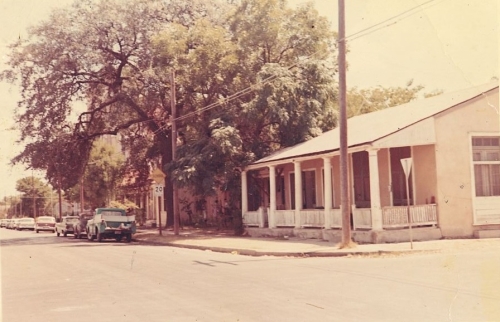The Residents of Germantown

The Urban Renewal site of HemisFair was a diverse neighborhood called Germantown before being demolished. However, to others, it was just home; the neighborhood encompassed a rich diversity of indigenous groups, German, Polish, Alsatian, Mexican immigrants, Mexican Americans, and African Americans who, for generations, had resided in the 92.6-acre site of what is today HemisFair Park. It featured notable residents such as the Recio Family, St. Michael’s Catholic Church, and the Rodfei Sholom Temple, built around the turn of the twentieth century. In the mid-1960s, over 1,600 residents were displaced, and these buildings were destroyed to make way for a six-month World’s Fair called HemisFair ’68 with hopes it would bring economic growth to San Antonio. Only 24 structures from the former neighborhoods were preserved with the help of former residents and the San Antonio Conservation Society. Hemisfair is still being revitalized today as part of a mixed-use space for retail, residential development, and restored historic buildings, aiming to blend landmark preservation with modern amenities.
This heritage tree, which dates to the 1820s, originally resided on Alamo farmland bisected by the historic Acequia Madre. The Coahuiltecan-speaking people were among the many indigenous groups to reside and farm the lands of what became Hemisfair. In Germantown, this tree lived in the front yard of the homes of the Recio family, who had a multi-generational connection to the neighborhood and continue to refer to this tree as "Angelina's Tree."
Angelina Recio Pardo, who lived here as a child, explains: “The first house was a duplex owned by my uncle and usually vacant. The second house was my Uncle Mague's house, where he, my Aunt Julie, and my cousin Fernando lived. The third house was our house. In the middle of these three houses was an enormously tall oak tree. That tree was so big that its branches hung over all three houses. My grandmother, Concha, used to say that that tree had been there since the days of Santa Ana. After being displaced, the home they relocated to in Lavaca was one of the nicer ones on the block. It was a huge loss, nonetheless. They grew up in a neighborhood surrounded by family members, which was lost, but they didn’t have to go far.”